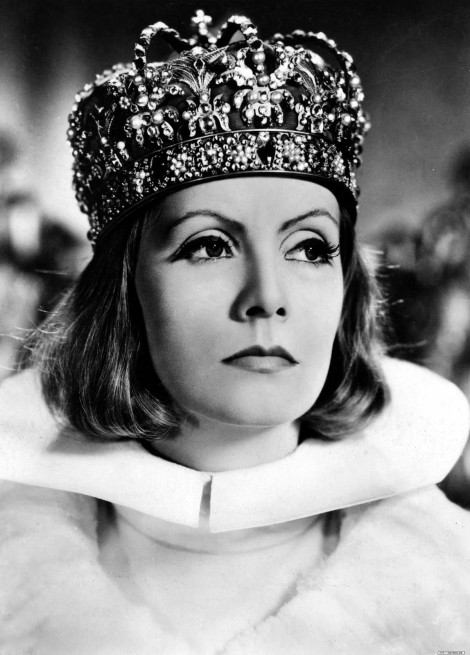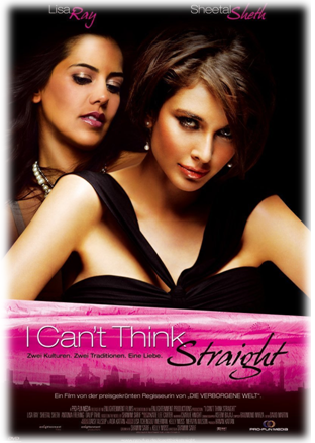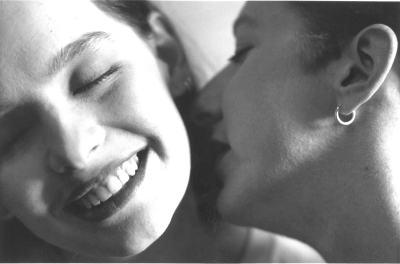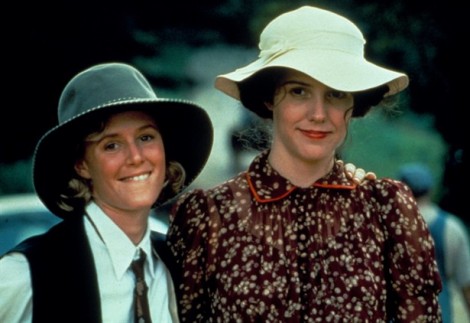From Morocco to Bound: How lesbians are portrayed in mainstream movies (Part 1/4)

It’s easy to forget these days, when we have film festivals like Zurich’s Pink Apple to introduce us to new gay movies with and about lesbian characters, that there used to be a time when lesbians were either nonexistent onscreen or were used by filmmakers to make the audience laugh at, pity or even fear them – and that it took almost a hundred years before Hollywood finally produced a film in which the sexuality of its two female lead characters is secondary to the plot.
So here’s the first in a monthly series of brief looks back at the history of how we’ve been depicted in the mainstream and how we’ve come a very long way, based on a – by no means comprehensive – list of movies over the last 100 years.
Part 1: In which we shouldn’t be surprised to find no real evidence of ourselves.

A Florida Enchantment, 1914
Directed by Sidney Drew; starring Sidney Drew and Edith Storey.
“A young woman discovers a seed that can make women act like men and men act like women. She decides to take one, then slips one to her maid and another to her fiancé. The fun begins.” From imdb.com
In his very interesting and well-written book “The Celluloid Closet” (there’s also a great 1995 documentary by the same name that’s worth seeing if you’re interested in this sort of thing, and let’s assume you are since you’ve read this far) Vito Russo lists this as one of the first depictions of same-sex romance. The silent picture made quite a splash when it was released. But it’s by no means a story about girls falling in love with other girls, even if the scenes of women dancing or flirting with each other hint at it. It’s about heterosexual role reversal, and all the characters go back to being themselves in the end when it turns out it was all a dream – that famous cowardly ploy used by screenwriters to reassure nervous audiences that all is still well in the universe when a plot gets a little too strange for the masses.

Morocco, 1930
Directed by Josef von Sternberg; starring Marlene Dietrich and Gary Cooper.
“The Foreign Legion marches in to Mogador with booze and women in mind just as singer Amy Jolly arrives from Paris to work at Lo Tinto’s cabaret. That night, insouciant legionnaire Tom Brown catches her inimitably seductive, tuxedo-clad act. Both bruised by their past lives, the two edge cautiously into a no-strings relationship while being pursued by others. But Tom must leave on a perilous mission: is it too late for them?” From imdb.com
Never mind the rest of the movie: in one of her most iconic scenes, Marlene Dietrich, appearing onstage dressed in a tuxedo and top hat, takes a flower from a woman, gives her a nice, long kiss, and throws the flower to a man, managing to turn everyone on in the process. But she’s clearly out to get the man, not the woman, and the scene is a prime example of lesbianism in the service of male sexuality – think of any number of porn segments in which two girls play with each other for a while before a man, implicitly the one thing they’ve been missing so far, comes along as the “real” event.
In keeping with the audience’s inability to separate the actor from their craft, this scene has spawned all kinds of speculation about Dietrich’s own sexuality, from dalliances with other women during youthful wild times in 1920’s Berlin to an alleged lifelong romance with the Swedish star Greta Garbo, but no real evidence of this has ever been produced.
Mädchen in Uniform, 1931
Directed by Leontine Sagan & Carl Froelich; starring Herta Thiele and Dorothea Wieck
“…a sensitive girl is sent to an all-girls boarding school and develops a romantic attachment to one of her teachers.” From imdb.com
The story of how Prussian authoritarianism can be very bad for you got Hitler’s propaganda minister Joseph Goebbels extremely upset, which in itself should forever prove this movie’s worth. It’s also a good example of, uptight Nazis aside, the kinds of movies being made in Europe at a time when US films were mirroring the increasingly conservative values of American society. Although the main character attempts suicide, it’s heartbreak, not shame about her lesbianism, that motivates her and the whole school bands together to save her life.
There’s also a 1958 version of this film with the magnificent Romy Schneider, who was attempting to lose her pious Sissi image. Needless to say, she easily succeeded.

Queen Christina, 1933
Directed by Rouben Mamoulian; starring Greta Garbo, John Gilbert and Elizabeth Young
“Queen Christina of Sweden is a popular monarch who is loyal to her country. However, when she falls in love with a Spanish envoy, she must choose between the throne and the man she loves.” From imdb.com
Although the true story of Sweden’s “girl king” was changed to add a male love interest, Greta Garbo still manages to get a good smooch in with the co-star playing her real-life “best friend”, the Countess Ebba Sparre. With the heterosexual love story acting as a sort of chaperone, Mamoulian was able to have Christina treat Ebba with an unusual enthusiasm without raising too many eyebrows. „I shall die a bachelor,“ Christina declares, and so she does, as her male lover is killed in a duel. Garbo’s cross-dressing and her butch swagger have made this a lesbian favourite for almost 80 years.
Sylvia Scarlett, 1935
Directed by George Cukor; Starring Katherine Hepburn, Dennie Moore, Cary Grant and Brian Aherne
“Escaping to England from a French embezzlement charge, widower Henry Scarlett is accompanied by daughter Sylvia who, to avoid detection, „disguises“ herself as a boy, ‘Sylvester’.“ From imdb.com
A perfect example of what in theatre and opera is called a “trouser role”, a device well-used by Shakespeare himself (see “Twelfth Night” – especially the 1996 movie with the English actress Imogene Stubbs as an absolutely adorable Viola). For this kind of role, a plot is constructed around a young woman who for whatever reason has to disguise herself as a man. This allows for all kinds of posed scenes of faux lesbianism, in this case with Dennie Moore falling for Hepburn as “Sylvester”. But the story still turns around the man, as Brian Aherne gets Hepburn to put on a dress again in the end.
As with Marlene Dietrich, this role fuelled rumours about Hepburn’s own sexuality and these rumours still persist today.
Next month:
The relative openness of the 1910’s, 20’s and early 30’s is squelched by the conservatism creeping into American society and for the next four decades lesbians are found at cinema’s sidelines as disturbing (and often disturbed) characters.





1 Comment
Looking foreward to next week